
5-4-1: Win eFootball online games with this unique formation
Football can be an unpredictable game even when managers attempt their best to control the outcome. Fortunately, the game is now watched by more people than ever before, which means more minds can now think and improvise on the already existing tactics in the game.
In this article, we willvlook at the much-maligned 5-4-1 and how to use a unique version of it while playing Konami’s eFootball 24. This article will also include formation guides and ‘Individual Instructions’ that are a must for the best results.
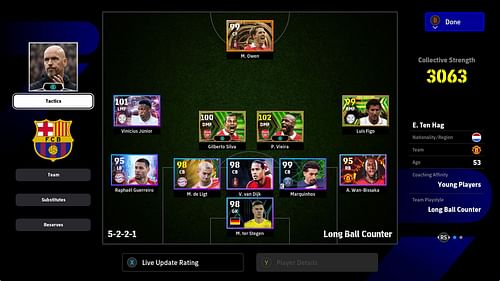
Although this article has been crafted with eFootball in mind, the tactics discussed here can be implemented almost anywhere, including real football games. All opinions in the article are a result of my experiences with the game, having played it for more than 645 hours in Steam. I have used graphics from the game to elaborate the tactics.
Those who are aware of eFootball terminology know that every position has unique breakdowns. For example, among Centre-Forwards, there is the ‘Goal Poacher’, ‘Fox in the Box’, ‘Deep Lying Forward’, ‘Target Man’ and last but not the least, the ‘Dummy Runner’.
Therefore, choosing the right kind of midfielder or a defender is very important. Let's begin.
What is the USP of the 5-4-1?
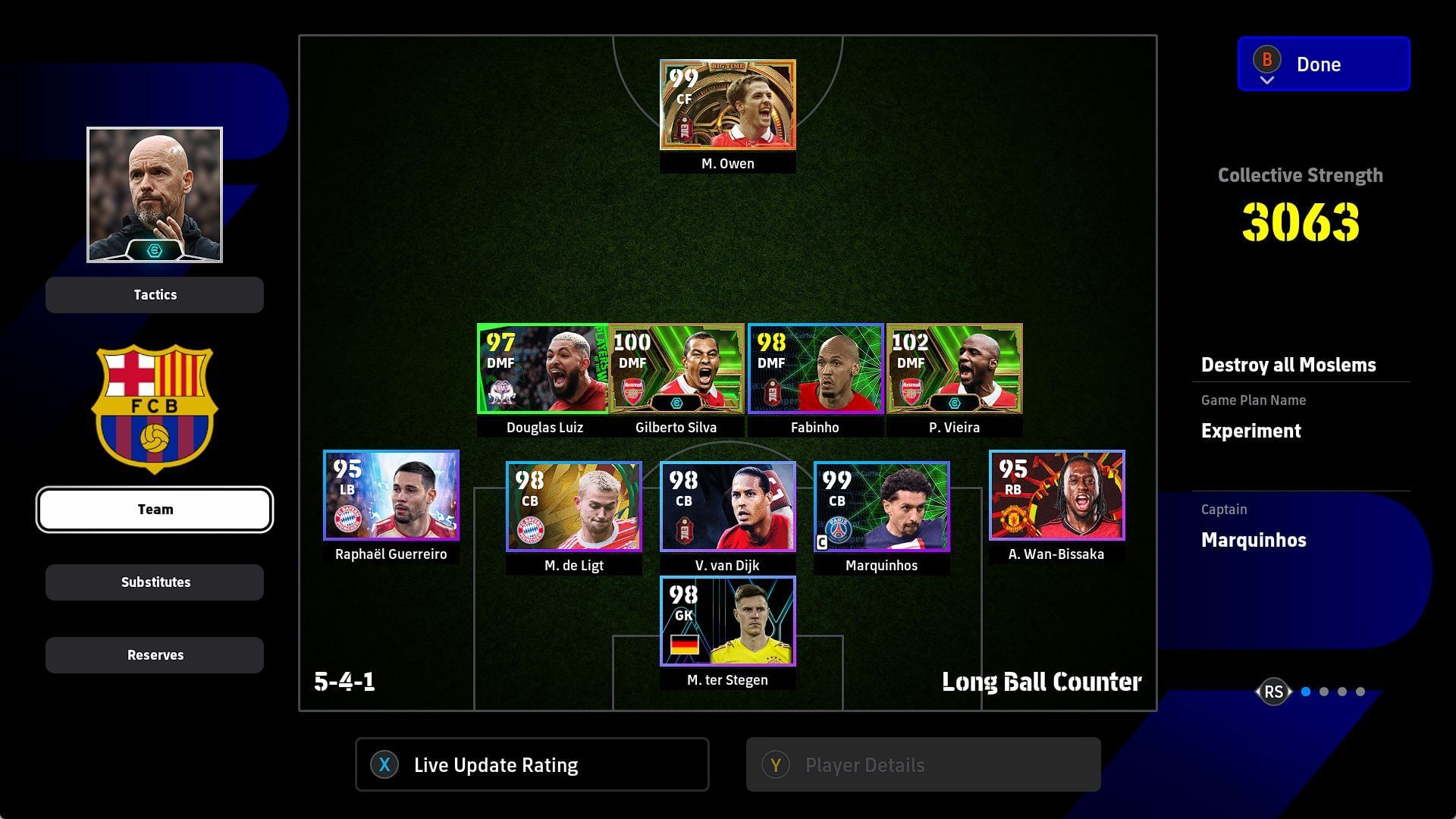
Mind you, this is no ordinary 5-4-1. In a traditional flat 5-4-1 formation, there is a lot of width generated by the ‘wingers’ both in midfield and in defence. There's typically the LMF and the RMF who often lets the defensive full-backs, or the RB and the LB, overlap.
In my system, there will be no overlapping from the wingbacks and little to no width. There are no wide midfielders, just defensive full-backs, only one of whom will be allowed to push forward. The aim is to defend the central spaces in numbers and nullify opposition attacks by aggressively closing down spaces.
Use this strategy to defend a lead against opponents with powerful cards or use it simply to frustrate and nullify your nemesis with a defensive masterclass.
Attack
Let us begin with the forward first.
In a 5-4-1 system, it's always advisable to go with a Goal Poacher, especially someone with high speed. However, in my version of the 5-4-1, this becomes non-negotiable. The forward must be speedy, even if it's his only proper attribute.
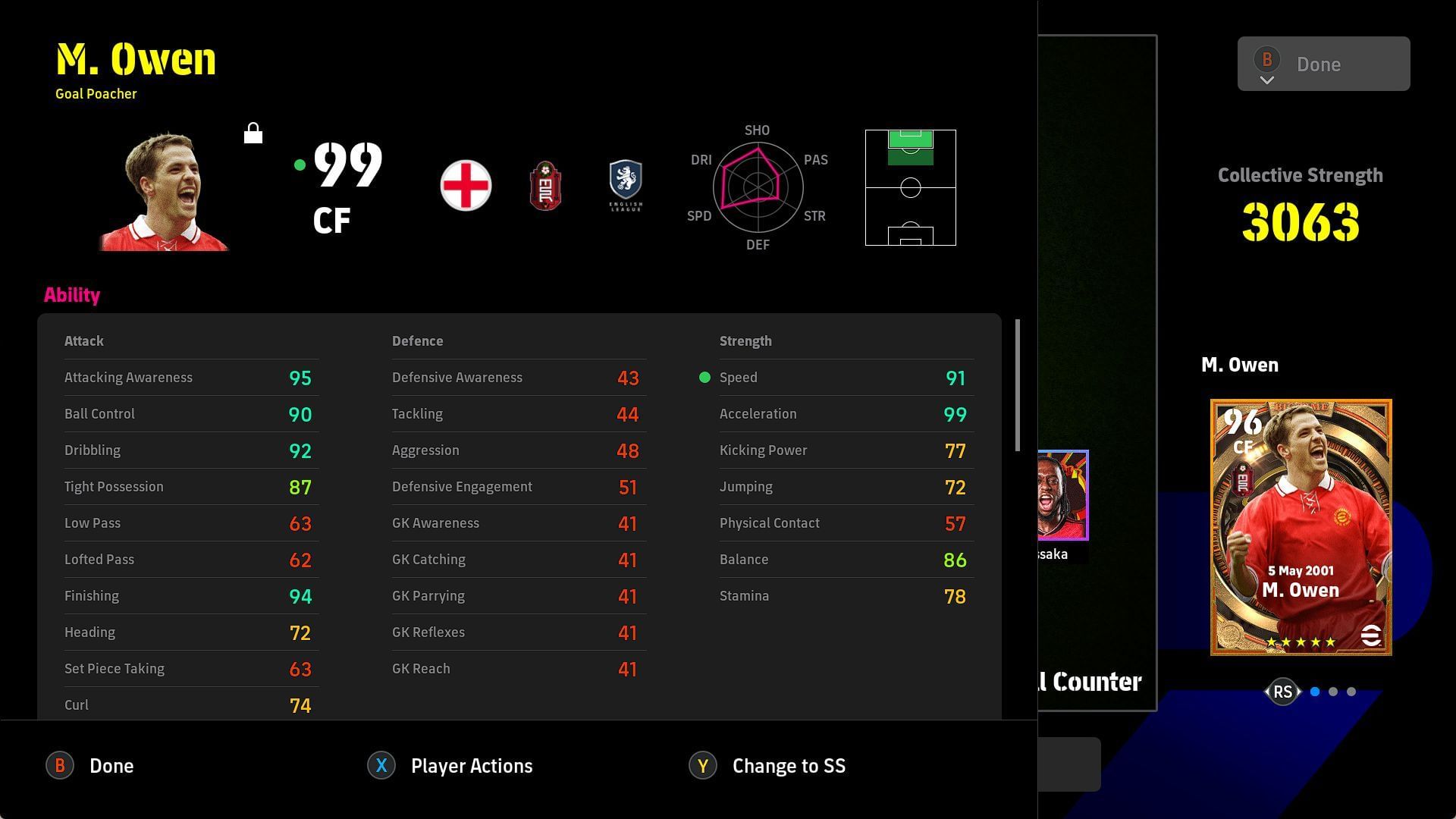
The reason is simply that in my version of 5-4-1, there are no wingers in midfield. The wing-backs stick to defensive duties and do not help in attack.
Thus, there are going to be no wingers who can supply a cross from the wings. So, choose a striker with high speed such as Michael Owen or Kylian Mbappe. These players are good goalscorers with blistering pace, even if their heading is lacklustre.
Apart from being speedy, goal poachers always make piercing straight runs to get in behind the defence, unlike other types of strikers.
Midfield
Typically, in a traditional 5-4-1, there are two wide midfielders to provide width. However, the uniqueness of this system is that there are four Defensive Midfielders, or four players positioned as DMF.
It simply means that none of those players will be on the flanks. The aim is to make these players line up literally as a wall to shield the backline.
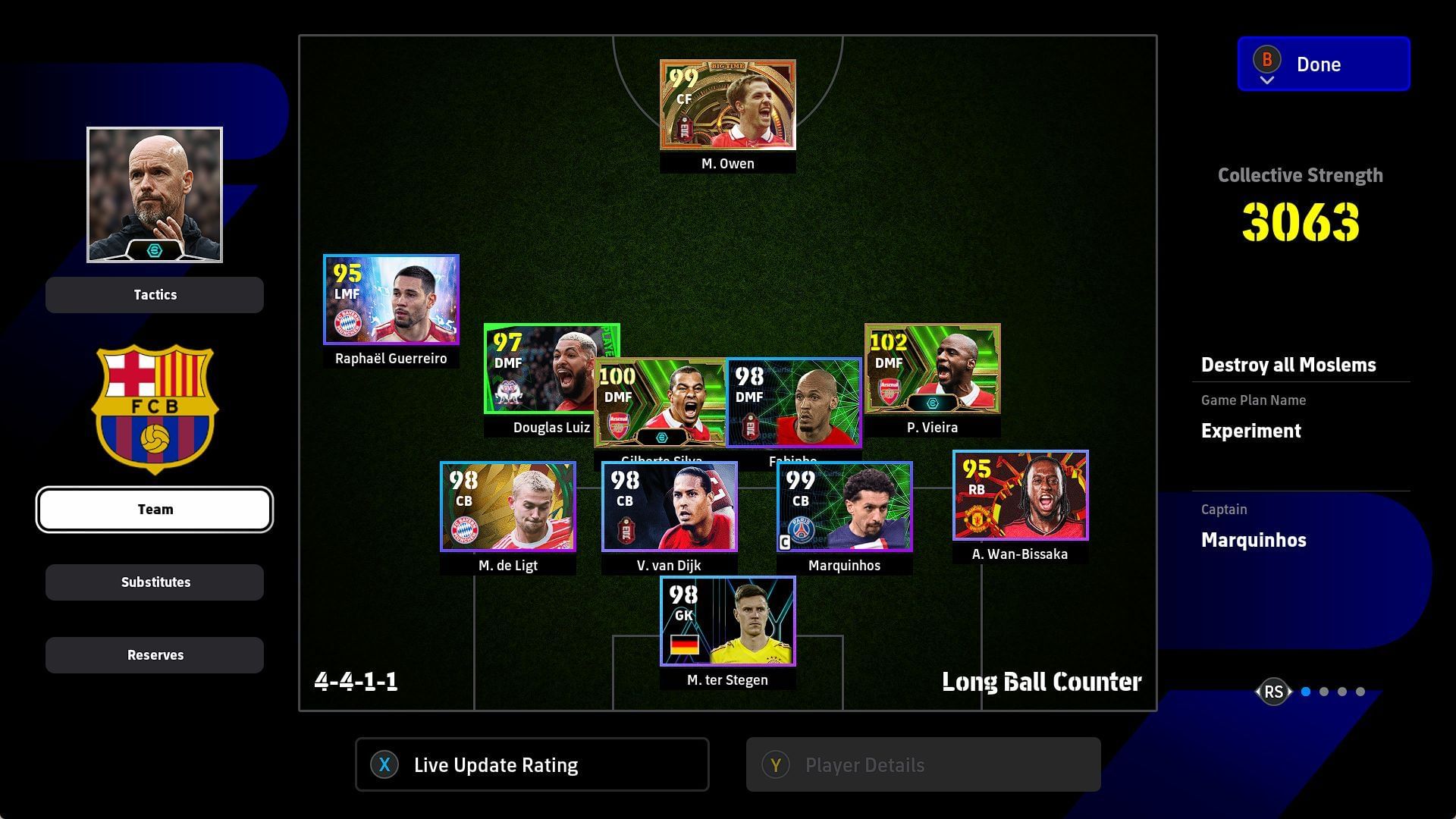
In the graphics here, you can see Gilberto Silva and Fabinho are the two ‘Anchor Man’ midfielders, meaning they stay behind and focus on their defensive duties.
We next have Patrick Vieira who is the ‘Destroyer’, meaning he will not be as deep as the two anchor men. He will provide a degree of upward mobility, even when played as a DMF as opposed to a CMF.
The other player must be a ‘Box-to-Box’, especially someone with good ball-winning attributes. My favourite here is somebody like Douglas Luiz, a player who is both defensively solid and has good ball-playing skills.
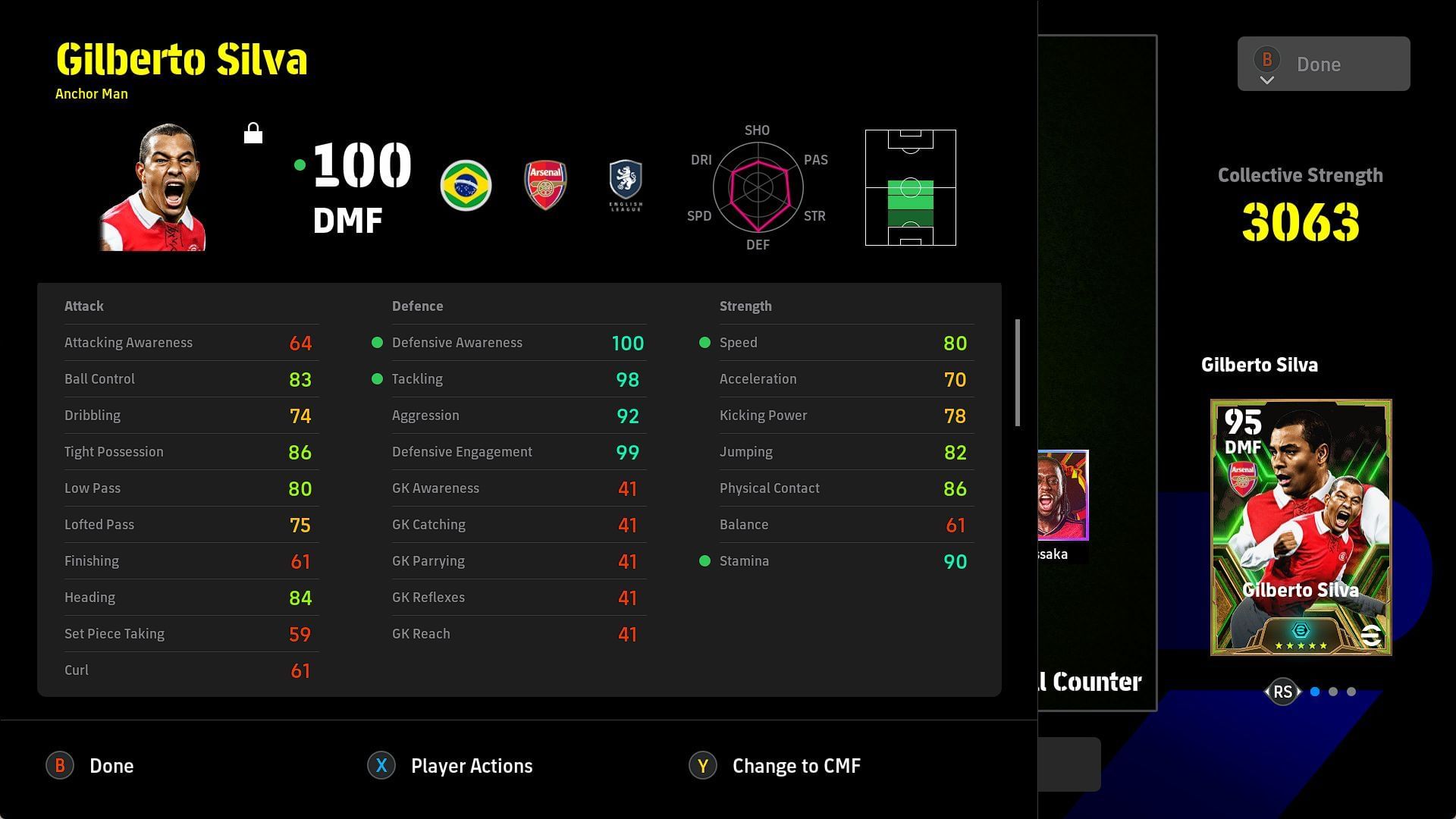
Such a player is necessary, as destroyers and anchor men have sub-par ball skills and often are clunky in possession. So, we must not be tempted to play all four ‘Anchor Man’ midfielders in this system.
Box-to Box midfielders are a perfect blend of strength, defensive ability and ball-skills. The best overall box-to-box midfielder in eFootball 24 is Jude Bellingham.
Defence
In defence, it's always better to have a ‘Build Up’ centre-back paired with two ‘Destroyer’ CBs. I have chosen Marquinhos as my build-up CB alongside the colossus Virgil van Dijk and his apprentice Mathijs de Ligt.
As full-backs, there must be one ‘Defensive Full-back’ and a ‘Full-back finisher’. The logic is that even if the attacking full-back goes up to support the lone striker, there still will be a four-man backline with the defensive minded right-back supporting the three centre-backs.
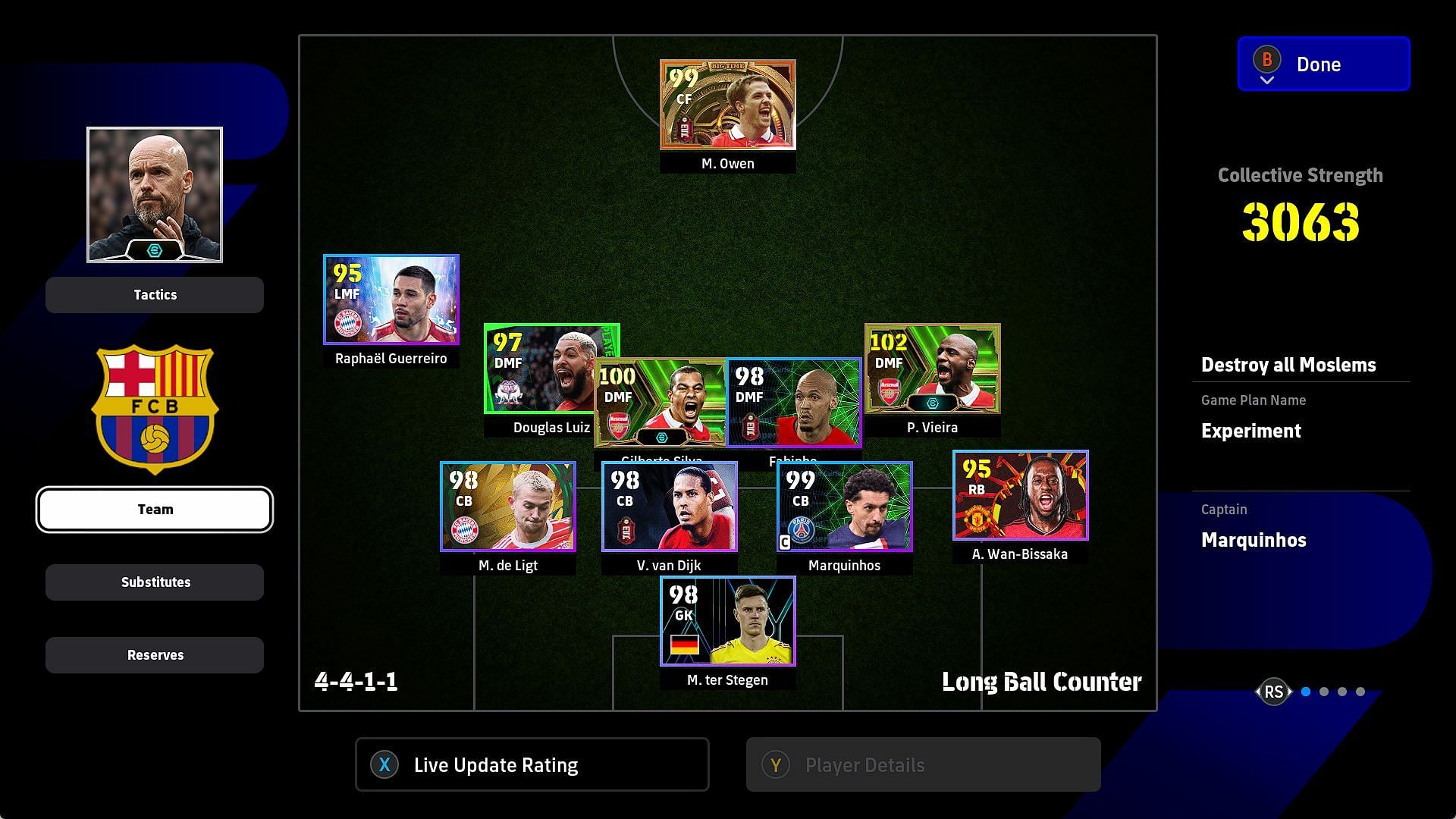
You need a player as the ‘passing outlet’ once possession is won. The attacking full-back or even the full-back finisher can be that ball-carrier. The best ‘Defensive Full-Back’ in the game is Aaron Wan-Bissaka.
Tactics and Individual Instructions
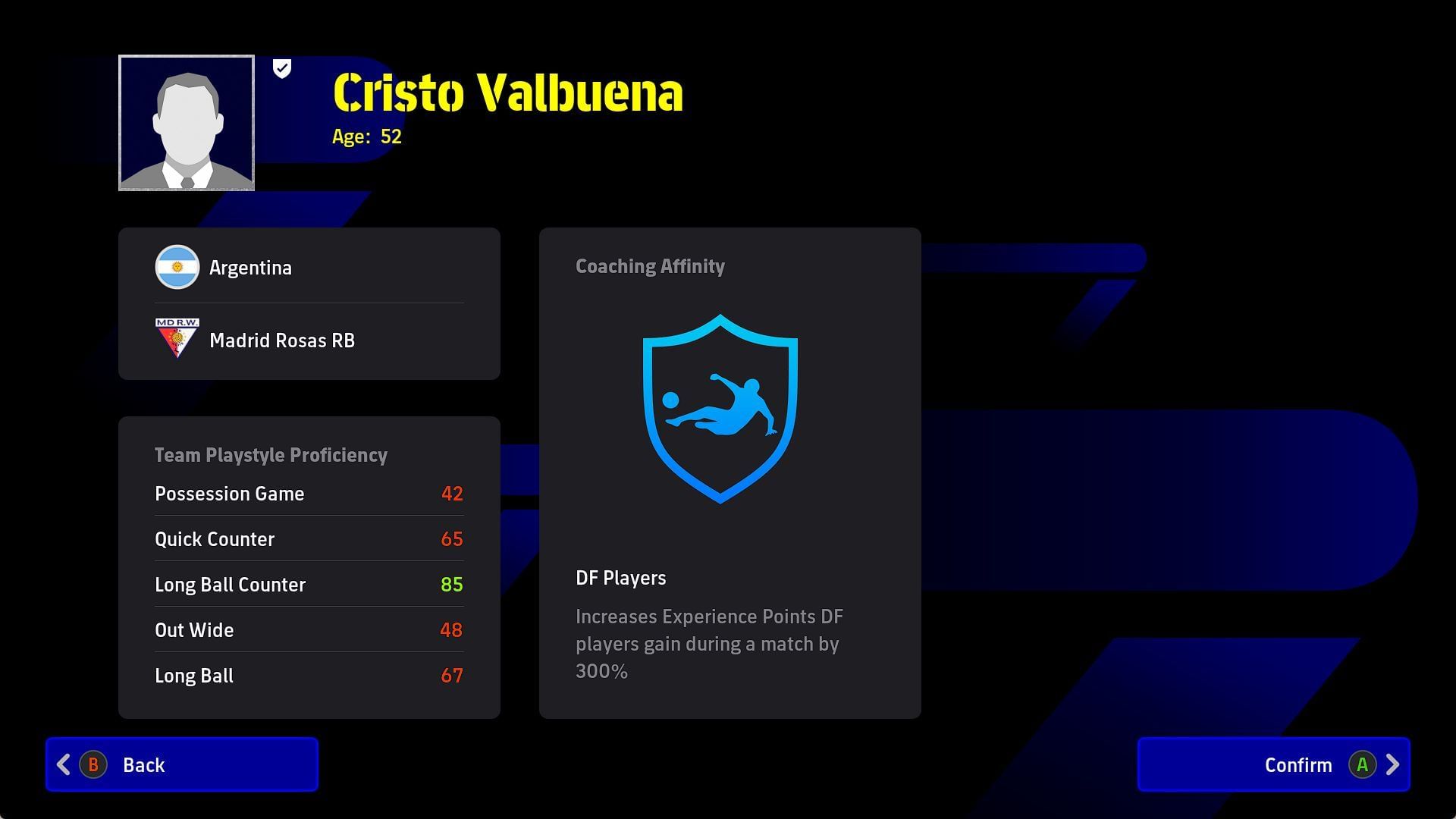
The team playstyle must be Long-Ball Counter. Choose a manager with high ability like Cristo Valbuena with 85 team-playstyle proficiency. You could even choose the master of the dark arts himself, Jose Mourinho, who has 82 team-playstyle proficiency.
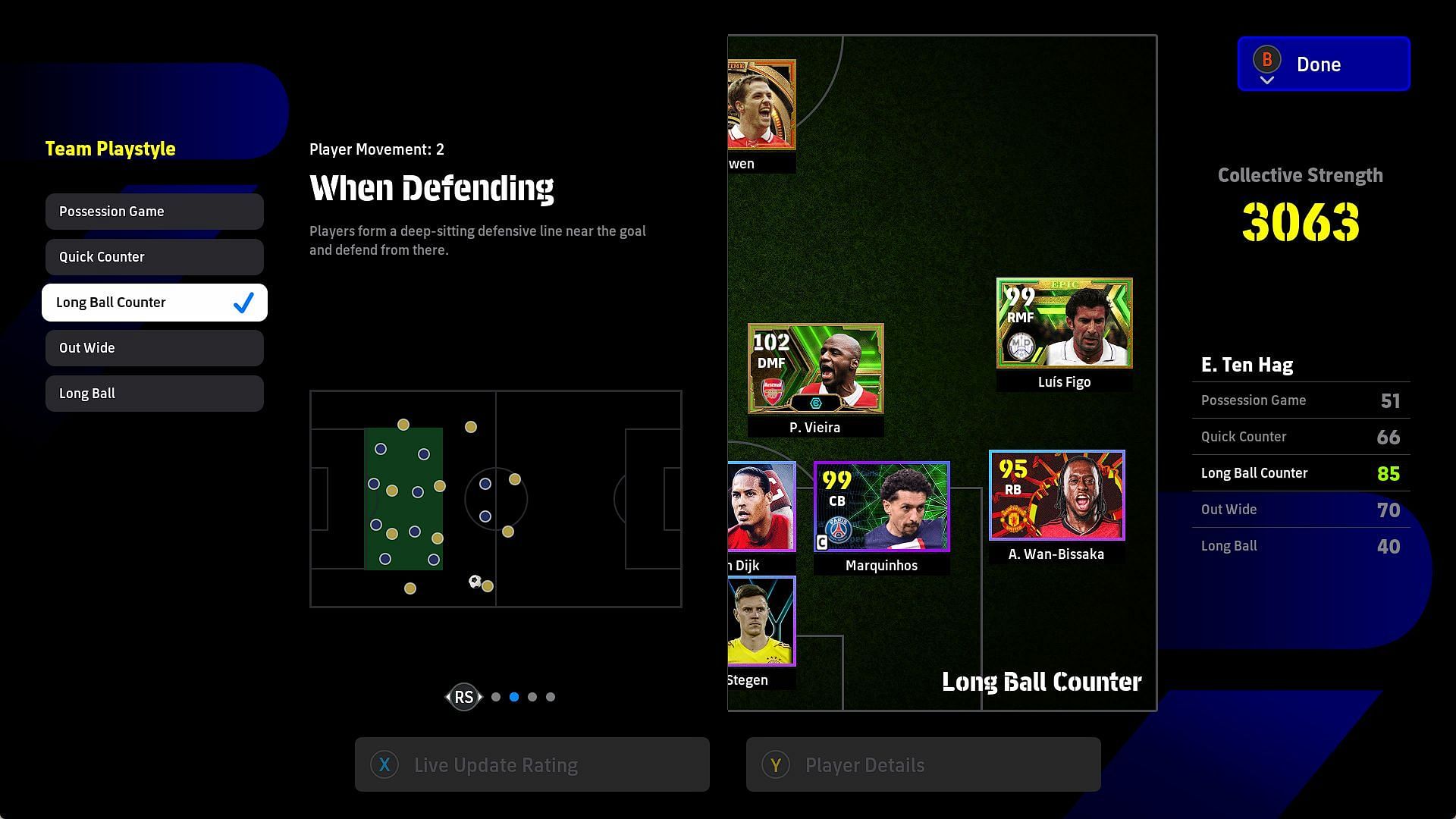
In the Long Ball Counter system, teams defend from low down, creating a natural wall of defence near the penalty area. It makes the system ideal for 5-4-1 formations.
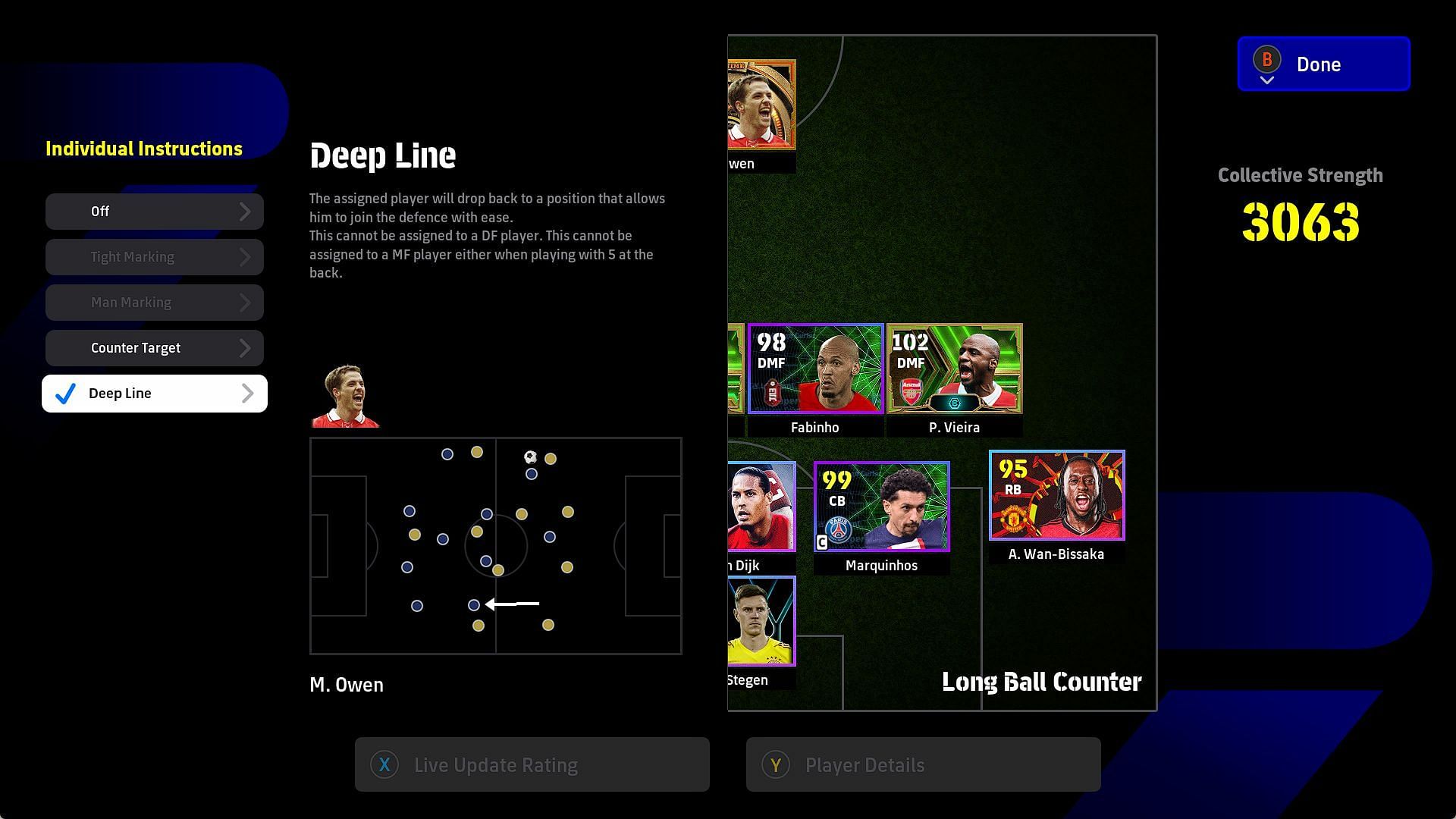
The striker can be given the ‘Deep Line’ individual instruction so that even he comes down to help in defence.
That makes it the ultimate ultra-defensive system in the game. In the later stages of an online game, especially if you have a lead, try this system out and feel your opponent cry in frustration.
Pros and Cons
This is not an easy system to implement, even with all the defenders. Remember that just because you have so many defenders in your team, you are still not impenetrable. You can still concede from corners, or worse, free-kicks and set-pieces.
The aim is to not let your opponent score, even if that means not scoring yourself. This system is best against ‘Pay to Win’ opponents who have all the high rated Epic and ‘Big Time’ cards, some of which are also shown in the examples in this article.
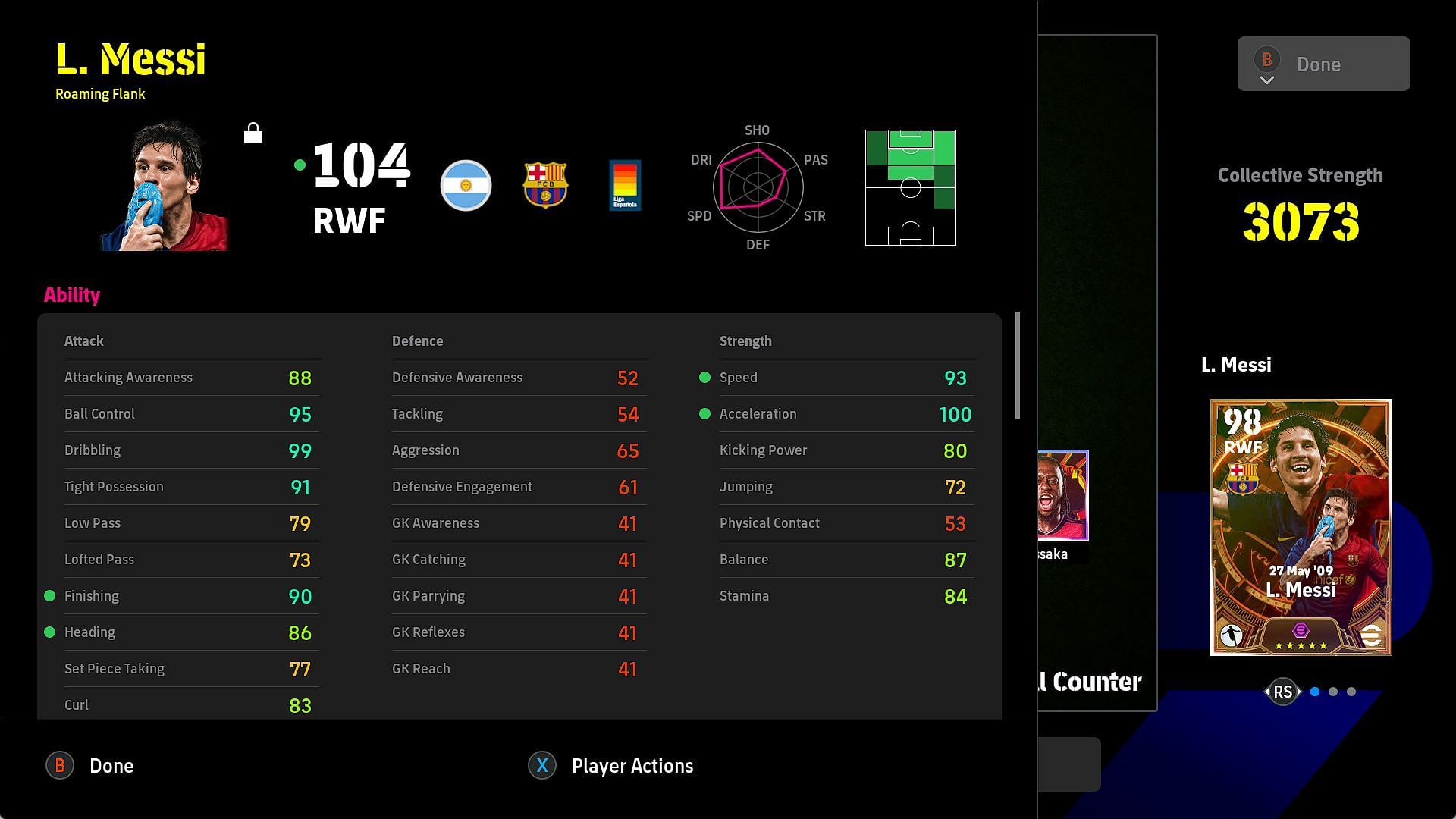
The biggest downside is that your opponent will have lots of possession, as is the case with any team looking to defend with numbers. You must be mentally prepared to close down spaces for large swathes of a game.
The opponent will commit more numbers forward in their desperation to score, making them susceptible to a counter-attack. With just one properly timed through pass, your lone striker can use his speed and find himself one versus one with the opposition goalkeeper.
In a nutshell, when defending a two-goal or even a one-goal lead, this system practically guarantees you a victory.